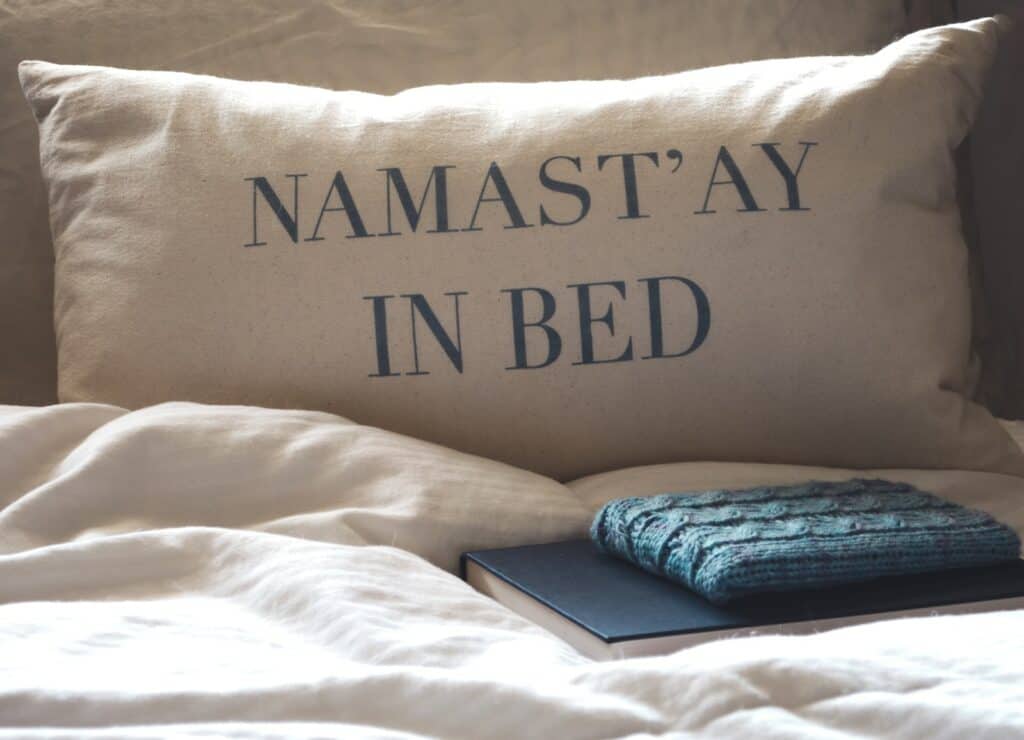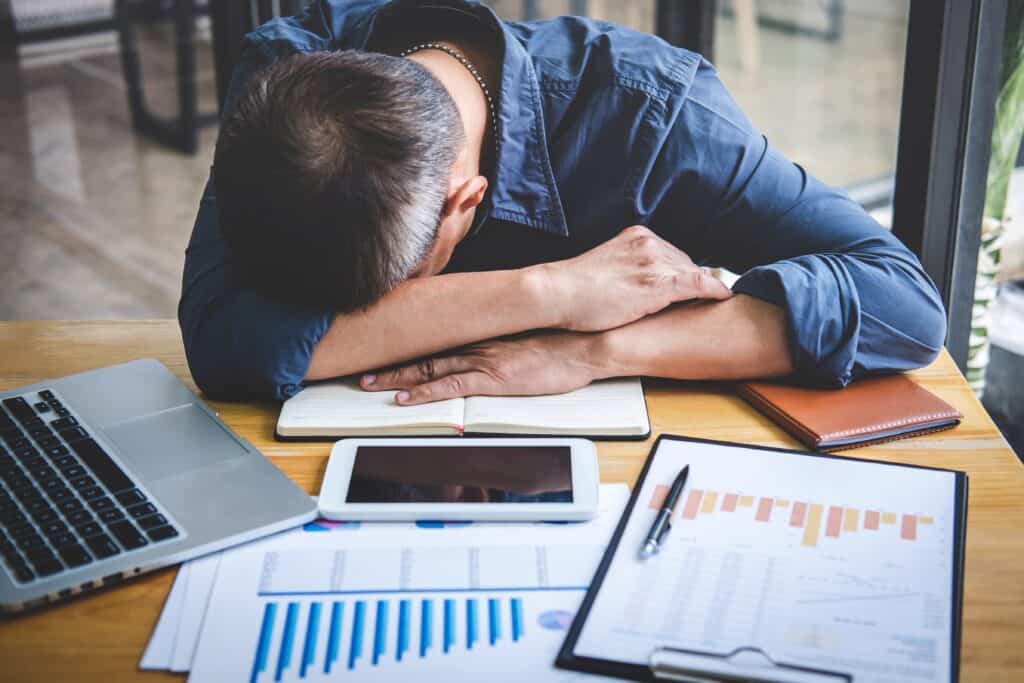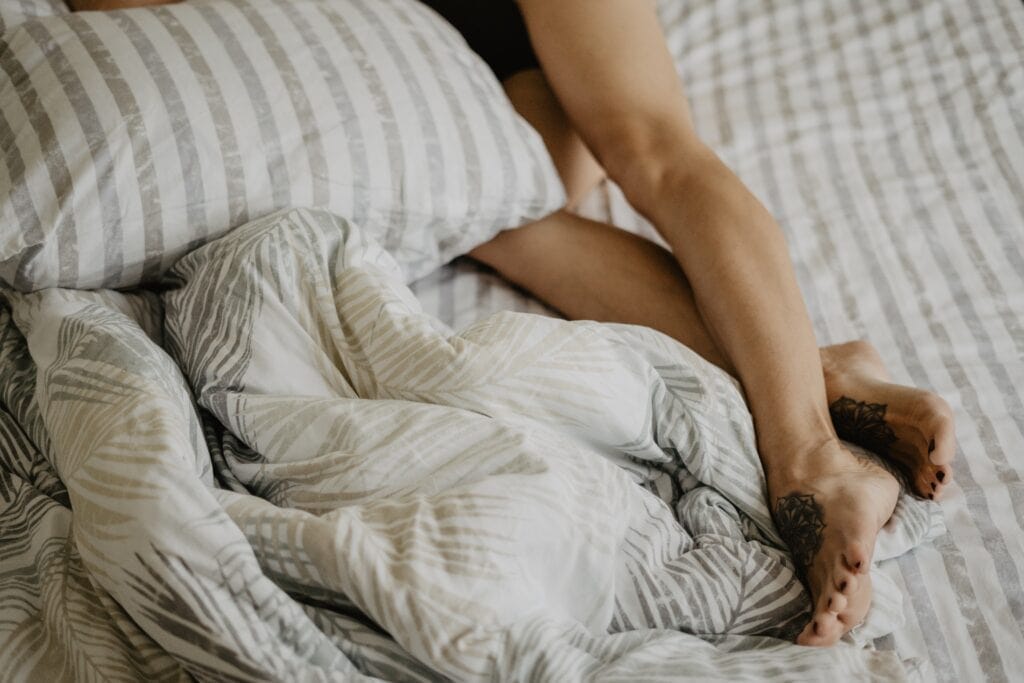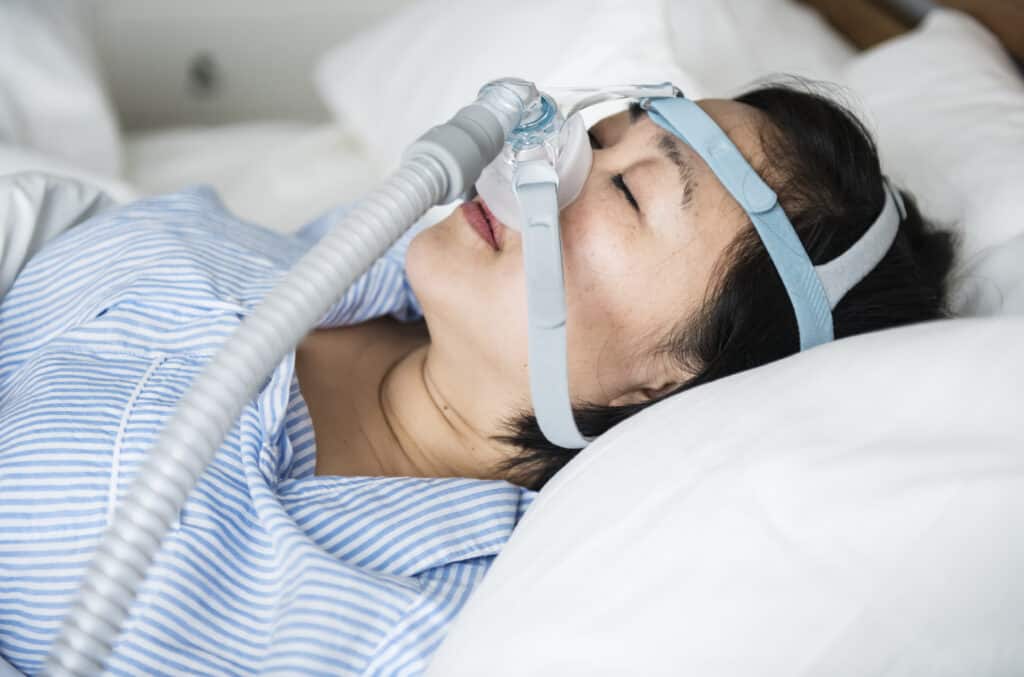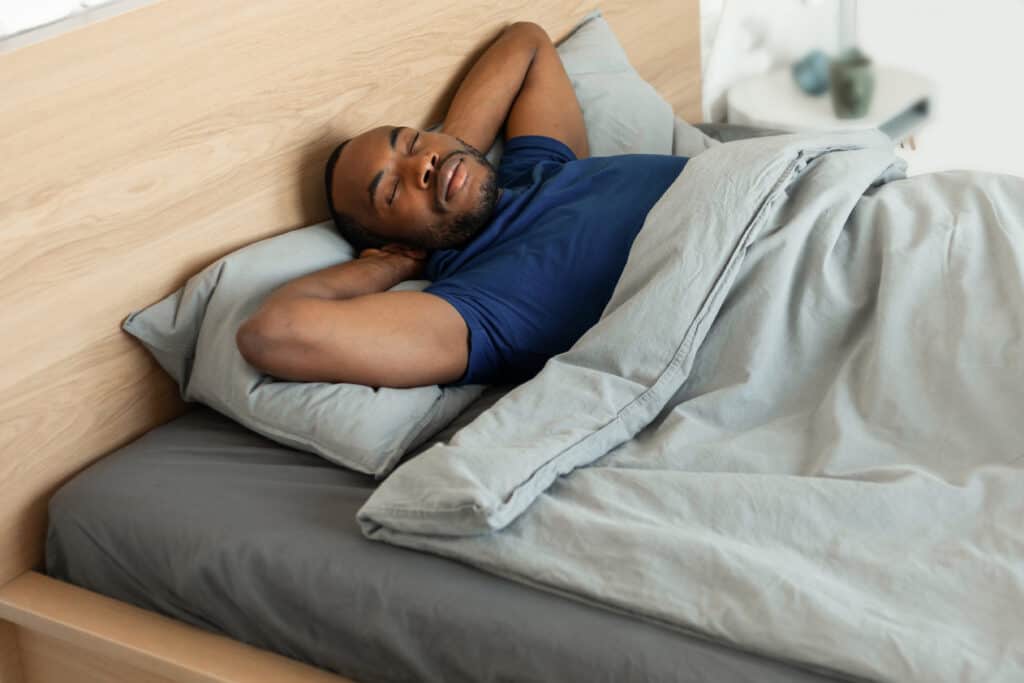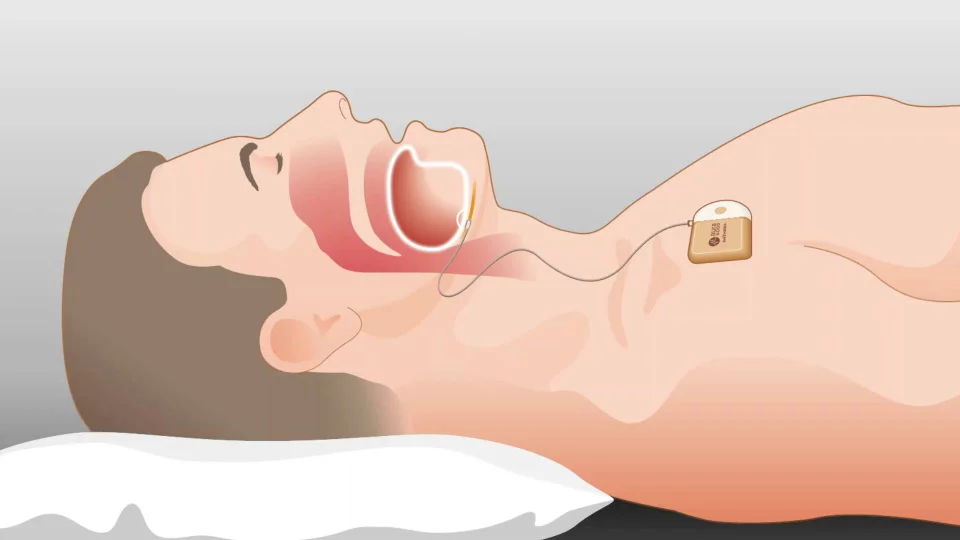Many people struggle with falling asleep quickly, which can lead to feelings of frustration and exhaustion. However, there are several techniques that can help individuals learn how to fall asleep faster and improve the quality of their sleep.
One popular method is muscle relaxation, which involves tensing and then relaxing different muscle groups throughout the body. This can help release tension and reduce anxiety or stress that can interfere with sleep. Another technique is deep breathing, which involves taking slow, deep breaths to calm the mind and body.
Additionally, creating a relaxing sleep environment can also be helpful for falling asleep quickly. This can involve minimizing noise and light, investing in comfortable bedding and pillows, and avoiding stimulating activities before bedtime. By incorporating these strategies into their bedtime routine, individuals can improve their chances of falling asleep quickly and getting the restful sleep they need.
Creating a Relaxing Sleep Environment
Getting a good night’s sleep starts with creating a relaxing sleep environment. There are many factors that can affect the quality of your sleep, including distractions, temperature, lighting, and the comfort of your mattress and pillow. This section will explore some tips for creating an optimal sleep environment.
Eliminating Distractions
One of the most important things you can do to create a relaxing sleep environment is to eliminate distractions. This means turning off electronic devices, such as TVs, computers, and smartphones, at least 30 minutes before bedtime. It’s also good to keep your bedroom quiet and free from outside noise. If you live in a noisy neighborhood, consider using earplugs or a white noise machine to block out sounds.
Adjusting Temperature and Lighting
Temperature and lighting can also significantly impact the quality of your sleep. Most people sleep best in a cool, dark room. The ideal temperature for sleep is around 65 degrees Fahrenheit (18 degrees Celsius). You can use a programmable thermostat to adjust your bedroom temperature automatically.
In terms of lighting, it’s best to keep your bedroom as dark as possible. This means using blackout curtains or shades to block out streetlights and other sources of light. If you need a nightlight, choose one with a red or orange hue, which is less likely to interfere with your sleep.
Choosing the Right Mattress and Pillow
The comfort of your mattress and pillow is also crucial for a good night’s sleep. A mattress that is too soft or too firm can cause discomfort and lead to poor sleep quality. Choosing a mattress that provides adequate support for your body type and sleeping position is important. If you’re not sure which type of mattress is best for you, consider consulting with a sleep expert.
Similarly, your pillow can also affect your sleep quality. A pillow that is too high or too low can cause neck pain and lead to poor sleep. Choose a pillow that provides adequate support for your neck and spine and is comfortable for your sleeping position.
In summary, creating a relaxing sleep environment is essential for a good night’s sleep. By eliminating distractions, adjusting temperature and lighting, and choosing the right mattress and pillow, you can set yourself up for a restful and rejuvenating night’s sleep.
Establishing a Bedtime Routine
Establishing a consistent bedtime routine can help signal to the body that it is time to wind down and prepare for sleep. Here are some tips for creating a bedtime routine that can help you fall asleep faster.
Setting a Consistent Sleep Schedule
One of the most important aspects of a bedtime routine is setting a consistent sleep schedule. Going to bed and waking up at the same time every day can help regulate the body’s internal clock and promote better sleep. Aiming for seven to nine hours of sleep per night for adults is recommended.
Winding Down with Relaxation Techniques
Incorporating relaxation techniques into a bedtime routine can help calm the mind and body and prepare for sleep. Some techniques that can be helpful include:
- Taking a warm bath or shower
- Practicing deep breathing exercises
- Doing some gentle stretches or yoga poses
- Listening to calming music or white noise
- Reading a book or practicing meditation
Avoiding Stimulants and Heavy Meals
Stimulants such as caffeine and nicotine can interfere with sleep and should be avoided in the hours leading up to bedtime. It is also best to avoid heavy meals, as they can cause discomfort and interfere with sleep. Instead, opt for light snacks such as a small serving of fruit or nuts.
In conclusion, establishing a consistent bedtime routine can help promote better sleep and make it easier to fall asleep faster. By setting a consistent sleep schedule, winding down with relaxation techniques, and avoiding stimulants and heavy meals, you can create a bedtime routine that works best for you.
Practicing Mindfulness and Meditation
For those who struggle with racing thoughts and anxiety at bedtime, practicing mindfulness and meditation techniques can help calm the mind and promote relaxation. Here are some techniques to try:
Deep Breathing Exercises
Deep breathing exercises can help slow down the heart rate and calm the mind. One technique to try is the 4-7-8 breathing method. To do this, breathe in for 4 seconds, hold the breath for 7 seconds, and exhale for 8 seconds. Repeat this cycle several times until you feel more relaxed.
Guided Imagery and Visualization
Guided imagery and visualization techniques can help transport the mind to a peaceful, calming place. This can be especially helpful for those who struggle with anxiety or racing thoughts. One technique to try is to imagine yourself in a serene natural setting, such as a beach or forest. Focus on the environment’s sights, sounds, and smells, and fully immerse yourself in the experience.
Mindfulness Meditation
Mindfulness meditation involves focusing on the present moment and accepting thoughts and feelings without judgment. To practice mindfulness meditation, find a quiet, comfortable place to sit and close your eyes. Focus on your breath and the physical sensations in your body. When thoughts arise, simply acknowledge them and return your focus to your breath.
It’s important to note that mindfulness and meditation techniques may take time to master, and it’s okay if your mind wanders or if you don’t experience immediate results. With consistent practice, these techniques can help calm the mind and promote relaxation at bedtime.
How to Fall Asleep Fast with Natural Techniques
When it comes to falling asleep fast, natural remedies and techniques can be a great option to consider. Here are some methods that can help:
Aromatherapy
Aromatherapy is the use of essential oils to promote relaxation and improve sleep quality. Some of the most popular oils for sleep include lavender, chamomile, and bergamot. These oils can be used in a variety of ways, such as in a diffuser, added to a warm bath, or applied topically to the skin.
Studies have shown that aromatherapy can effectively improve sleep quality and reduce sleep disturbances. However, it’s important to note that not all essential oils are safe for everyone, and some may cause allergic reactions or other side effects. Talking to a healthcare professional before using aromatherapy for sleep is best.
Weighted Blankets
Weighted blankets are a type of blanket that is filled with materials such as plastic pellets or glass beads to add weight to the blanket. The added weight is thought to provide a calming effect and promote relaxation, making it easier to fall asleep.
Studies have shown that weighted blankets can effectively improve sleep quality and reduce anxiety and insomnia symptoms. However, it’s important to choose a blanket that is the right weight for your body and to avoid using a weighted blanket if you have any medical conditions that may be affected by the added weight.
Progressive Muscle Relaxation
Progressive muscle relaxation is a technique that involves tensing and then relaxing different muscle groups in the body to promote relaxation and reduce tension. This technique can be done in bed before sleep to help calm the mind and body.
To practice progressive muscle relaxation, start by tensing the muscles in your feet and holding for a few seconds before releasing. Move up the body, tensing and relaxing each muscle group as you go, until you reach the muscles in your face. This technique can be done in as little as 15 minutes and has been shown to be effective in reducing symptoms of anxiety and insomnia.
In conclusion, natural remedies and techniques can be a great option for those looking to fall asleep fast. Aromatherapy, weighted blankets, and progressive muscle relaxation are just a few methods that can effectively promote relaxation and improve sleep quality. However, talking to a healthcare professional before trying new sleep remedies or techniques is important.
Lifestyle Changes for Better Sleep
Getting a good night’s sleep is essential for overall health and well-being. Making lifestyle changes can help improve the quality of sleep and help you fall asleep faster. Here are some lifestyle changes that can help:
Exercise and Physical Activity
Regular exercise can help improve sleep quality and reduce the time it takes to fall asleep. However, avoiding exercising too close to bedtime is important, as it can cause the body to become too stimulated to sleep. It is recommended to exercise at least 3 hours before bedtime.
Avoiding Caffeine and Alcohol
Caffeine and alcohol can interfere with sleep quality, making it difficult to fall asleep. It is recommended to avoid consuming caffeine and alcohol at least 4-6 hours before bedtime. This includes coffee, tea, soda, and chocolate.
Creating a Relaxing Sleep Environment
Creating a relaxing sleep environment can help promote better sleep. This includes keeping the bedroom cool, dark, and quiet. Establishing and sticking to a regular sleep schedule, even on weekends, is also helpful.
Other lifestyle changes that can help improve sleep quality include reducing screen time before bedtime, practicing relaxation techniques such as deep breathing or meditation, and avoiding large meals and fluids close to bedtime.
By implementing these lifestyle changes, individuals can improve the quality of their sleep and fall asleep faster.
Dealing with Sleep Disorders and Issues
People who struggle with sleep disorders and issues often find it difficult to fall asleep. Various factors like anxiety, stress, sleep apnea, restless leg syndrome, and insomnia can cause these issues. Here are some tips for dealing with these issues:
Insomnia and Sleep Latency
Insomnia is a common sleep disorder that affects millions of people worldwide. It is characterized by difficulty falling asleep or staying asleep. If you have insomnia, you can try the following:
- Establish a sleep routine: Go to bed and wake up at the same time every day.
- Avoid caffeine, alcohol, and nicotine: These substances can interfere with your sleep.
- Create a relaxing environment: Ensure your bedroom is quiet, dark, and cool.
- Practice relaxation techniques: Deep breathing, meditation, and yoga can help you relax and fall asleep faster.
Sleep latency is the amount of time it takes for you to fall asleep. If you have trouble falling asleep, you can try the following:
- Avoid napping during the day: Napping can make it harder for you to fall asleep at night.
- Reduce your exposure to blue light: Blue light from electronic devices can interfere with your natural sleep cycle.
- Take a warm bath or shower: This can help you relax and prepare your body for sleep.
Anxiety and Stress
Anxiety and stress can make it difficult for you to fall asleep. Here are some tips for reducing anxiety and stress:
- Practice mindfulness: Mindfulness meditation can help you relax and reduce stress.
- Exercise regularly: Exercise can reduce anxiety and improve sleep quality.
- Write in a journal: Writing down your thoughts and feelings can help you process them and reduce stress.
Sleep Apnea and Restless Leg Syndrome
Sleep apnea and restless leg syndrome are sleep disorders that can interfere with your sleep. Here are some tips for dealing with these issues:
- Sleep apnea: If you have sleep apnea, you may need to use a CPAP machine to help you breathe while you sleep.
- Restless leg syndrome: If you have restless leg syndrome, you can try stretching, massaging your legs, or taking a warm bath before bed.
In conclusion, there are various ways to deal with sleep disorders and issues. By making some lifestyle changes and practicing relaxation techniques, you can improve your sleep quality and fall asleep faster. If you continue to have trouble sleeping, you should talk to your doctor.
Conclusion
In conclusion, falling asleep fast is essential for a good night’s sleep. There are several ways to achieve this, including:
- Establishing a consistent sleep schedule
- Creating a relaxing sleep environment
- Engaging in relaxation techniques such as meditation or deep breathing exercises
- Avoiding stimulating activities before bedtime
- Limiting caffeine and alcohol intake
It is important to note that what works for one person may not work for another. Therefore, it is essential to experiment with different techniques and find what works best for you.
Additionally, it is important to consult a healthcare professional if you are experiencing chronic sleep problems. They can provide further guidance and potentially recommend medication or other treatments.
By implementing these tips and techniques, individuals can improve their chances of falling asleep quickly and enjoying a restful night’s sleep. Good sleep hygiene is essential for overall health and well-being, so it is worth investing the time and effort to establish healthy sleep habits.




